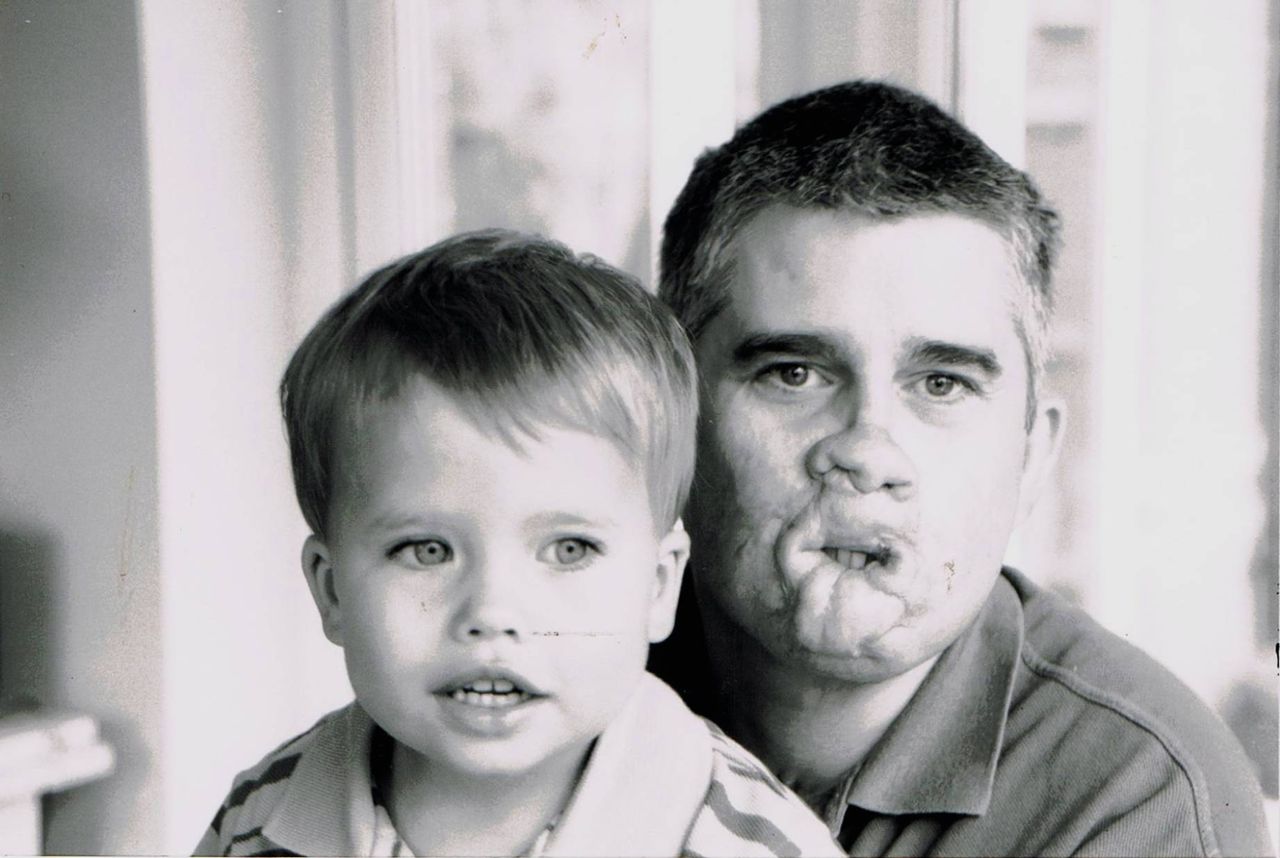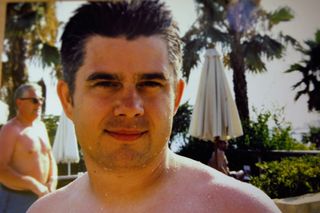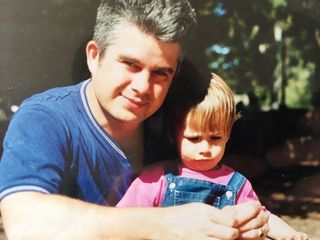'Sepsis stole my husband's limbs - just a month before I was due to give birth'

"Holding my baby bump, I looked at my husband Tom’s grey face and the wires snaking across his body into the machines keeping him alive.
"He was in an induced coma, having being struck down by sepsis, and now doctors needed to amputate both his arms and legs, as well as some of his facial features. I knew life would never be the same again – but, right then, I only cared that he survived.
"Tom and I first met at university in 1980. Back then, we were both in relationships, so our mutual affection only went as far as a lingering look. After graduation, I didn’t see him for 15 years – until, in 1995, he tracked me down using an old number he’d unearthed from the university yearbook.
"We quickly fell in love, moved into a lakeside cottage in Rutland, and our daughter, Grace, was born in April 1997. Tom had never known his own dad and was determined to be a devoted father, so he left his job in corporate banking to look after Grace full-time, while I worked – building my film-directing business.
The day that sepsis struck
"Two years on, we were expecting again - this time a little boy. But on 8 December 1999, a month from my due date, I awoke to hear Tom being sick in the bathroom. By 7am, he couldn’t keep anything down and his eyes were sensitive to the light. ‘It’s man flu,’ I joked – but over the next few hours, Tom deteriorated rapidly, and after dropping Grace at my mum’s, I returned to find him barely conscious on the sofa, his lips blue and his breathing rapid.
MORE: What is sepsis? Everything you need to know
At the hospital, the doctors were as confused as I was. Tom was 38, fit and healthy, yet he’d become seriously unwell within hours. ‘I don’t want to die,’ Tom whimpered, and I tried to reassure him, though I was starting to panic.
GoodtoKnow Newsletter
Parenting advice, hot topics, best buys and family finance tips delivered straight to your inbox.

"Then a doctor rushed through the ward, waving Tom’s results in the air. ‘This man has sepsis,’ he shouted. Tom’s body was shutting down in a deadly response to an infection, and he was placed on IV antibiotics and put into a coma. His organs had gone into failure.
"‘I’m sorry but it’s unlikely Tom will survive,’ a doctor told me. I just stared at him, hoping I’d heard wrong. In a haze, I rang Tom’s family. ‘You need to say goodbye,’ I whispered into the phone."
"Hours later, my mum arrived with Grace, who looked at my bump and asked, ‘Where’s baby?’ For her, there was only one reason to be at the hospital. Tom made it through the night – and over the next week, family drifted in and out, taking Grace for hot chocolates or muttering words of comfort while I sat by Tom’s bedside.
‘I’m sorry but it’s unlikely Tom will survive,’ a doctor told me. I just stared at him, hoping I’d heard wrong.
"Though he was alive, his whole body was swollen and purple and his feet and hands were darkening – a sign of necrosis eating away at his flesh. After 10 days, doctors told me multiple amputations were their only option. It was impossible to comprehend what that would mean long-term, but I was heavily pregnant, with a two-year-old at home. Tom dying just wasn’t an option.
"On Christmas Eve, Tom had the 12-hour operation to remove his legs below the knees, and arms below the elbows, as well as his nose, lips and chin.I was terrified. There was a risk he’d die during surgery, and doctors said he’d be kept in a coma until he recovered. The following day, I wrenched myself from the hospital and took Grace to Mum’s, determined to give her some sort of Christmas. But as I forced a smile and constructed her new trike, all I could think about was Tom.
"Freddy was born in January, on a ward near Tom’s, and I spent the next months by Tom’s bed, breastfeeding Freddy, before driving 30 miles to see Grace at my mum’s. I was barely sleeping."
The start of Tom's recovery
"Tom was gradually brought out of his coma – and by May 2000, he could open his eyes briefly. At first, he couldn’t remember who he was, or recognise me, but as his mind returned, I was faced with the agonising task of telling him what had happened. When it finally sank in, he was frightened and grief-stricken, but seeing Freddy gave him something to live for.
"It was hard for Grace. Taking her to see Tom for the first time since the surgery, she turned straight back around. ‘That’s not my daddy,’ she cried. ‘She’ll get used to it,’ I told Tom, seeing tears in his eyes. I hoped I was right.

"Months of rehabilitation followed, – and, eventually, Tom started walking with prosthetics. In August 2000, nine months after falling ill, Tom wheeled himself back through our front door as a quadruple amputee.
"But surviving was just the start, now we had to learn to live with Tom’s disabilities. I tried my best to create normality, but had to carry Tom upstairs to the bedroom, help him shower, and help him eat – all of which I knew was just as awful for Tom as it was for me. His face was completely devastated, which made him want to hide away. He couldn’t eat or drink properly, and we could no longer kiss. Tom drooled from his gaping mouth and that embarrassed him.
"Surviving was just the start, now we had to learn to live with Tom’s disabilities"
"He’d been diagnosed with post-traumatic stress disorder, and when he shut himself away for hours at a time, I’d wonder whether he still wanted to be here at all. ‘I’m such a burden on you,’ he’d cry. But he was still the man I loved. He had several facial reconstructions, including a cosmetic nose. The prosthetics and wheelchair gave him independence, too, and he got a job in a call centre. The kids absolutely adored their dad, but at times found it difficult, as Tom couldn’t race around the park with them
"In 2016, Tom and I set up Resilience and Co, and now speak at conferences about sepsis. We want to give people the confidence and motivation to withstand life-changing events.
"Today, Grace is 22, and Freddy is 19, and having a dad like Tom has made them strong, independent adults. But our ordeal didn’t leave me unscathed. In the years since, I’ve suffered two breakdowns, which I dealt with through cognitive behavioural therapy and counselling. Through it all, I could see the immense challenges Tom faced – and knew that as long as he was being strong, I could be, too."
What you need to know about sepsis
Sepsis can be fatal if not dealt with quickly. Tom’s blog shows a simple way to remember the symptoms:
Symptoms of sepsis:
- S is for shivering
- E is for extreme pain & discomfort
- P is for pale or discoloured skin
- S is for sleepy and/or confused
- I is for ‘I feel like I might die’
- S is for short of breath
If you suspect sepsis, do not hesitate to call 999.